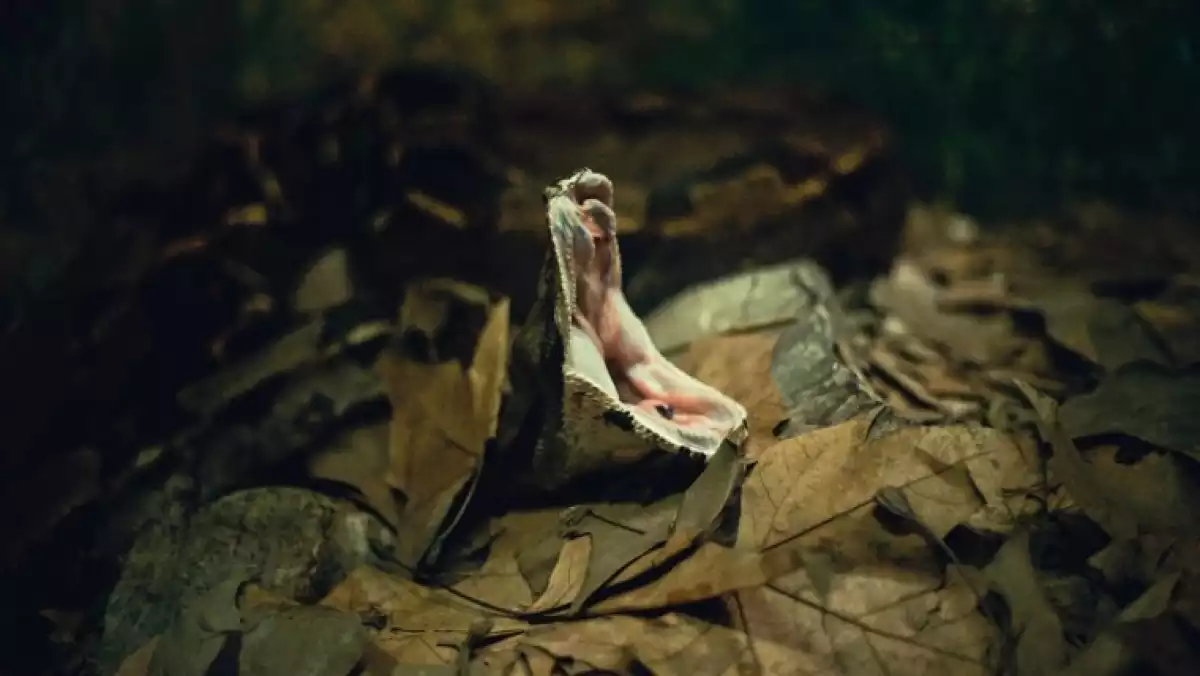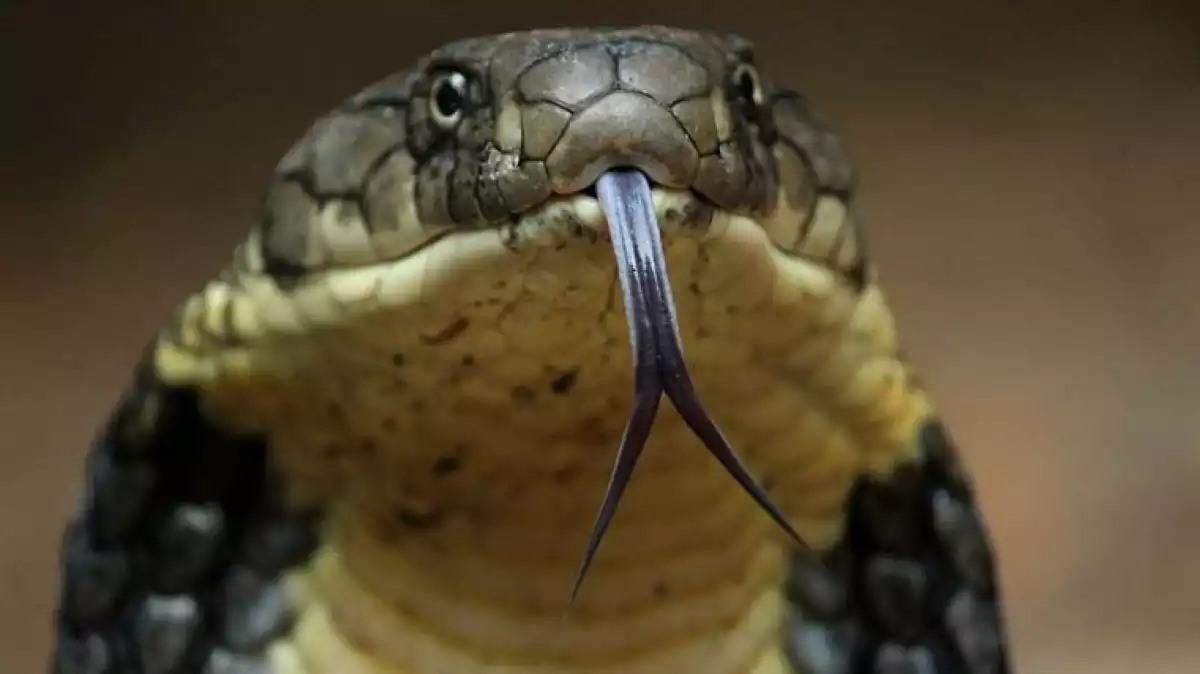
There are more than 600 species of venomous snakes in the world, but here we'll list the top ten deadliest, so you know what to look out for.
Snakes are carnivorous reptiles, and because of that, they need to hunt to eat. The classification of these animals depends on how they catch their prey -in this case, if they use venom to immobilize their dinner, they are considered venomous snakes.
Venomous snakes: Traits
Unlike other snakes, venomous snakes use poisonous saliva to immobilize their prey which they inject into them with their fangs -in other words, by biting them.
This is a sophisticated system where a toxin group (which may be stronger or weaker) is channeled in the saliva and sent through their hollow fangs towards an outside organism. The bite is usually quick, and besides being a hunting technique, it's an excellent defense mechanism.
A snake's venom apparatus is formed by glands that contain modified saliva, or saliva mixed with toxins, and a duct that connects these with the fangs. The musculature and mandible act in a way that allows the serpent to bite: it's estimated that up to 600 milligrams could be injected with a single bite.
Different types of snakes are quicker and more efficient when it comes to injecting their venom, and this depends on the snake species, the amount of venom introduced and the recipient's body mass. The poison then spreads through the bloodstream and paralyzes the muscles first and then the organs, which leads to death.
We can break down the most venomous snakes into two groups: the least poisonous snakes (Colubridae) and sea snakes (hydrophiidae). Some of the most feared snakes are in the Elapidae group (cobras, mambas, and coral snakes), the Viperidae (vipers), and Crotalidae (rattlesnakes).
Related: 7 Carnivorous Plants: Care, Types And Traits
Top 10 most venomous snakes in the world
Every year more than 30,000 people in the world die from venomous snake bites. Some of the deadliest slithering reptiles are right here on this list.
1. Taipan snake
Taipan snakes are a dangerous reptile species from Australia, whose bite could end a man's life in no more than 45 minutes. That's why this is considered the deadliest snake on land.
There are many types of taipan snakes, but the most poisonous is the inland taipan (Oxyuranus microlepidotus). It is yellow-brown in color and even has lighter tones including olive green, with a gray tinge on the upper and side scales. It has a small dark head and a rounded snout.
This snake's saliva is so toxic that it could kill more than 100 people with just one bite -its venom is 50 times more lethal than a cobra's. After a bite, the affected person experiences typical symptoms (vomiting, headache, fever, diarrhea, dizziness) until experiencing neurotoxic symptoms and kidney failure which leads to death 80% of the time.
The taipan lives in arid regions of central Australia, and its diet mainly consists of rodents and birds.
2. Black Mamba snake
The deadliest snake on the African continent, the black mamba (Dendroaspis polylepis), can measure in at more than 4 meters in length and it's one of the fastest snakes on the planet: reaching speeds of up to 20 km/hour. This serpent's habitat is in Tanzania, Congo, Zambia, Somalia, South Sudan, Uganda, Mozambique, and Kenya.
Even though this slithering reptile is pale gray or yellowish in color, the inside of its mouth is black, which is why it's referred to as the 'black mamba.' Like other serpents, it prefers to go unnoticed and remain sheltered, although unlike some species, when it feels threatened, it becomes much more aggressive and impulsive.
Another black mamba trademark is that when it feels threatened, it lifts its head considerably. Although it doesn't have the most poisonous venom, its aggressiveness, fast pace and agility make it one of the most dangerous snakes.
Related: What Is The Fastest Animal In The World?
3. Belcher's sea snake
Until recently there were two or three marine species on the list of most venomous snakes in the world, although this title now belongs to the inland taipan. Belcher's sea snake (Hydrophis belcheri) reins as the most venomous sea snake on our list.
This serpent prevails in the region between the Indian Ocean and the seas of Australia and Thailand, and it's recognized for its combination of symmetrical grey or yellowish and black bands. It can reach more than 2 meters in length, and although it's highly poisonous, it isn't considered one of the most dangerous snakes since it hardly comes into contact with human beings.
4. King Cobra
The king cobra is the longest snake on our list of most venomous snakes since it can grow to be more than five meters long. It lives in southeast Asian regions like Thailand, the Philippines, or India, and usually feeds on other serpents. This is where its scientific name, Ophionphagus hannah comes from since it means 'snake eater.'
Besides being extremely long, its many vertebrae make it an extremely agile reptile. When threatened the cobra lifts its torso, unfolding its hood around its head which gives it the characteristic cobra look. It's usually brownish, green, or yellowish in color.

This snake injects its venom using its fangs which can reach up to 2 cm both in length and width, causing a neurotoxic collapse which attacks the central nervous system. The victim experiences dizziness, vomiting, and blurry vision, and ends up dying of acute respiratory failure. Its venom isn't the most poisonous, but it injects a significant amount in just one bite.
5. Russell's viper
Daboia russelii, commonly known as Russell's viper, is a poisonous snake that inhabits southern Asia and India, to be more specific. This reptile is dangerous since, besides the fact that its venom is highly poisonous, it tends to live near humans in search of rodents and small reptiles.
This serpent owes its name to Patrick Russel, a scientist who discovered many species of amphibians and reptiles in India, and Daboia is an Indian term that means something hidden and threatening. This particular viper is the one that causes most deaths every year.
Its flat triangular head, large lifted snout, and robust body with splotches on its back, make it easily recognizable. Its venom is very toxic, causing tissue cell death and severe internal bleeding that leads to death in a matter of very little time.
6. Banded krait
Its appearance is frightening: two meters of yellow and black bands with a marked spine that ends in a slender elongated head with black eyes and two marks that look like yellow arrows. But, its bite is even worse: its fast-acting venom leads to death by asphyxiation.
The banded krait or Bungarus fasciatus resides in regions of India and Pakistan, and southeast Asia and its bite is 16 times as deadly as the cobra's. Its venom contains toxins that inhibit the action of the neurotransmitters, which causes gradual organ failure.
The common Krait is from the same family with an equally as deadly bite and this variety seeks refuge in tents, shoes, and bags near human beings. In this case, it is blue with fine white stripes.
7. Gaboon viper
Bitis gabonica is a viper species that lives in Sub-Saharan Africa whose morphology is terrifying: it's the heaviest viper and its fangs are over five centimeters long. It has a very wide and flat head, followed by a narrow neck and robust body with pale and dark spots that range from brown to ochre.

This appearance allows it to camouflage itself well among the dry leaves in arid regions, and to launch surprise attacks on its victims. This, paired with its speedy attack, makes it a relentless predator, and a very dangerous one at that.
It feeds on rodents and small mammals, although if it feels threatened, it can act aggressively towards humans. Its bite injects a large amount of venom that due to its high toxicity, induces multiple organ failure and death.
8. Sidewinder
The sidewinder or horned rattlesnake (Crotalus cerastes) is one of the most venomous snakes in the rattlesnake family. You can find the sidewinder in the deserts of Baja California, Arizona, Nevada, and Mexico, its speed leaving hideouts like bushes and sandy basins give it an advantage like any relentless predator.
The scaly protrusions above its eyes earned it the name 'horned rattlesnake.' It isn't very big and it is a generally a light sandy brown color. What makes this snake really special, as you might have guessed by its name, is the way that it moves -perfectly slithering in a wave-like motion which allows it to move quickly on slippery surfaces like sand.
Its venom contains potent toxins that work aggressively to paralyze the human body and then leads to death via asphyxia.
9. Fer-de-lance snake
The fer de lance snake is the deadliest on the American continent, found in countries like Guatemala, Beliz, Honduras, Colombia, Ecuador, and Venezuela, although its presence in southern Mexico is the most well recognized.
The fer de lance (Bothrops Asper) is nocturnal and generally lives in humid forests. The main characteristic of this species is the fact that females grow to be twice as large as males, with a greenish or brown color and a yellow tail.
The fact that they have a heat sensing pit between their eyes and nose to detect prey that emits infrared radiation, which gives them a competitive advantage as a predator. Although they eat rats and small reptiles, they usual dwell close to human settlements, and on top of that, they can be irritable and aggressive.
Related: Dinosaurs: Classification And Names
10. Philippine Cobra
This is the most venomous of the small snakes since in spite of its reduced size, its bite is dangerous. So much so that the neurotoxic qualities of its saliva can cause human death within an hour: that's why it's considered the most venomous of the Naja species among cobras.
The Naja philippinensis is one of the species known as a 'spitting cobra' because it has the ability to shoot venom up to 3 meters away. This is a strategy to blind their prey and leave it defenseless easing the attack with their fangs.
As its name indicates, this snake is only present in the Philippines. Its appearance is one common to cobras with the folding hood that opens when it feels threatened and a highly agile body. It's usually pure brown, and snake charmers love it because of its sharp vision.
Check out the original article: Las 13 serpientes más venenosas (también en España) at caracterurbano.com

